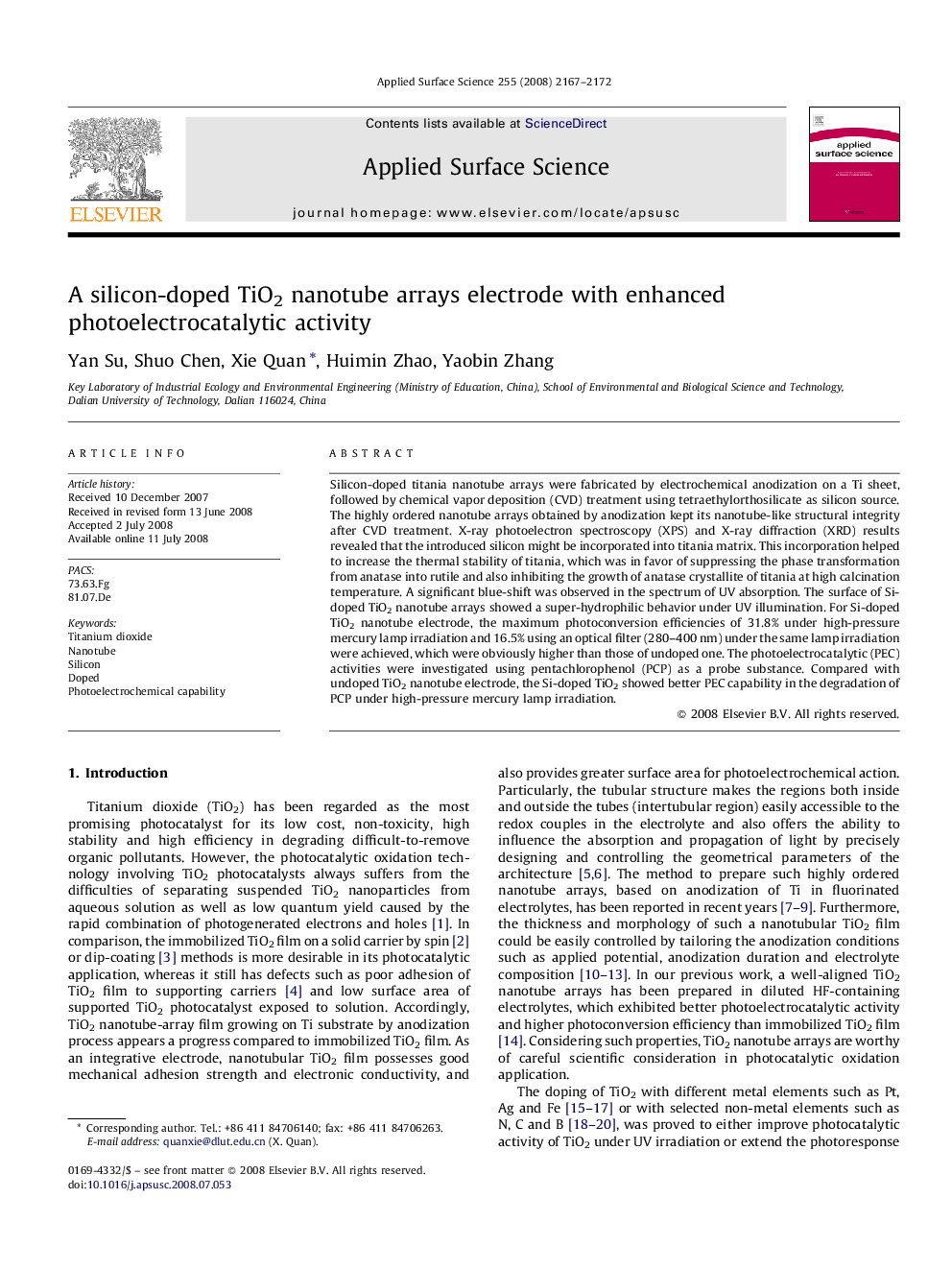| Article ID | Journal | Published Year | Pages | File Type |
|---|---|---|---|---|
| 5363236 | Applied Surface Science | 2008 | 6 Pages |
Silicon-doped titania nanotube arrays were fabricated by electrochemical anodization on a Ti sheet, followed by chemical vapor deposition (CVD) treatment using tetraethylorthosilicate as silicon source. The highly ordered nanotube arrays obtained by anodization kept its nanotube-like structural integrity after CVD treatment. X-ray photoelectron spectroscopy (XPS) and X-ray diffraction (XRD) results revealed that the introduced silicon might be incorporated into titania matrix. This incorporation helped to increase the thermal stability of titania, which was in favor of suppressing the phase transformation from anatase into rutile and also inhibiting the growth of anatase crystallite of titania at high calcination temperature. A significant blue-shift was observed in the spectrum of UV absorption. The surface of Si-doped TiO2 nanotube arrays showed a super-hydrophilic behavior under UV illumination. For Si-doped TiO2 nanotube electrode, the maximum photoconversion efficiencies of 31.8% under high-pressure mercury lamp irradiation and 16.5% using an optical filter (280-400Â nm) under the same lamp irradiation were achieved, which were obviously higher than those of undoped one. The photoelectrocatalytic (PEC) activities were investigated using pentachlorophenol (PCP) as a probe substance. Compared with undoped TiO2 nanotube electrode, the Si-doped TiO2 showed better PEC capability in the degradation of PCP under high-pressure mercury lamp irradiation.
